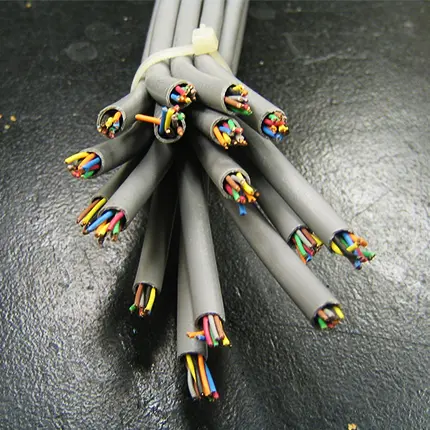What do you have, what do you recommend, and why?
Asking as I’ve got a lot of spare components lying around that I’m planning on turning into a NAS. If it doesn’t work out I’ll buy a pre-built enclosure and reuse the drives.
I think as a turn-key solution, the prebuilt enclosures are fine. I have a two-bay Synology that works well. If you’ve already got components though, DIY is probably going to give you a lot more granular control. I’m planning on building out a home server rack including a TrueNAS VM or something similar.
+1 for running TrueNAS in a VM, I’ve got one running in Proxmox. Make sure to enable hardware passthrough so TrueNAS has direct access to your drives!
Syno 920+ for me
Same. Having all their custom software available and just one click away is amazing, and with Docker you can install everything else just like a regular server. It’s the best of both worlds imo.
I’ll third that. I got a lemmy server up and running on mine too which was fun. I opted for a cloud solution though in the end.
Adding my 2c - I think it depends on if you want something that just works out of the box, or if you want to tinker and play with a DIY solution. I have a Synology DS220+ that just works, is easy to manage, has loads of apps etc. I also have a Raspberry Pi with Openmediavault installed and 3 SSDs attached which required a bit of setup, is more complex to get things working, also has apps (plugins) but is more of a project.
I replaced an old prebuilt Windows Home Server with a custom built server running unraid about…7 years ago. unraid has been rock solid for me. Great product. Very scalable for the home user.
Highly recommend unraid and it’s well worth the one time license fee.
Understand that this is a rabbit hole where you’ll hear a million opinions. If you’re just starting out, I’d recommend keeping it simple. It’s been a while since I looked at what’s new, but I’d look at truenas scale or unraid first.
I personally use truenas core (based on freebsd) but truenas scale (based on debian) opens up more options like docker that might be useful in the future.
I recommend sticking to hardware you already own until you run into something that you can’t do. Then you’ll have a better idea of what to look for and how everything works.
Thanks, the flexibility and closed source (I assume) of turn key solutions puts me off them. I’ve already got a raspberry pi running a few containers and I work with docker and Linux in my day job so I know a decent amount. The form factor of the turnkey solutions is the big draw for me at the moment to them as I’ve just got a spare ATX mid size tower handy. Would ideally replace with smaller case but then I’d need a smaller motherboard and that’s just raising costs for starting out. Potential upgrade path anyway.
I have a node 304 case with an itx board and I wish I’d have gone with something bigger with more expansion slots. Some sata ports died on me so I installed an hba card to give me more. That means I can’t add a 10g nic or a video card for hardware acceleration or…you get the idea. Ideally spend less money now and experiment, then in the future you’ll hopefully learn what suits your needs.
I used the cpu/motherboard/ram/psu from a desktop I’d since upgraded, slapped it into a 4u rackmount case I got cheap on Ebay (it looks awful - I think it was previously used in a lab - but it’s solid af), bought a nice big cooler and some noctua fans so it’d run quiet, added an HBA card, 4x shucked 14tb drives and a coupla 1tb m.2s, slapped Unraid on it, and was up and running with an awesome nas for really not that much money. Totally worth it, that thing is awesome.
I will admit it doesn’t look as swanky as a synology, but it was far cheaper, is a lot more capable of non-nas stuff, and every part is standard and upgradeable.
I had considered running a DIY for years, and eventually just caved and bought a Synology 1522+ NAS. It lets me run my Plex server and Matrix server, and it just handles all the config and updates for me easily.
The decision was that I wanted to backup my hobbies, not have backup BE my hobby.
To clarify, running Plex is easy; running Matrix is very NOT easy… But being a NAS was the easiest part, by far. Stick the drives in, turn on, follow the short manual that came with it to configure, and let it do its thing.
Personally, I use a “scratch built” machine to act as a file server/media server. Someone was going to recycle it at the office, so I added some hard drives and put it in a larger case.
It really comes down to two things in my mind: what can you afford and how deep do you want to follow the rabbit hole?
If you want something quick and easy, sure go for the premade. Nothing wrong with that.
If you want to use it as a learning tool, and add other services, then I think a home spun server is the way to go.
Just my 2 cents.
Depends on how you intend to maintain it. I started out with a Synology NAS. When that started to give out the ghost I built own so that I could have better control over the software and hardware. It’s now a NAS of Theseus - all the parts (even the OS) have been replaced over time, but it’s still the same “unit”.
The hardest part was deciding on a case. I started with a small form factor as a preference. Nowadays I just pick what gives me good airflow and ease in replacing parts.
Definitely try re-using what you have already. Just keep in mind that a NAS usually runs 24/7 and old gaming PC parts are usually quite power hungry, so it might cost a lot in terms of electricity.
Yeah this is definitely a downside to using spare gear over purposeful purchases. I think it makes sense to use what I have and optimise later. I’ve got an old intel i5 and mobo I’m planning on using for the NAS. Need to find another use for my old Ryzen 5 2600X.
I was going to say this too. It’s fun to have a project to do and to recycle old parts but something custom built for being a NAS will most likely be less power hungry and be less effort to maintain.
I picked up an old Dell Optiplex tower and slapped 4 cheap 4 TB drives in it. Setup as RAID 5 I got 12 TB of “redundant” storage for cheap! Perfect spot to keep all the p0rn torrents.
But I used OpenMediaVault for that deployment. It’s been OK… but I kinda feel that I am missing out on some of the more active developments of other distributions.
Despite that, I would absolutely suggest grabbing an old office computer and throwing some drives into it for a home NAS.
It’s the power usage and physical space that puts me off those kind of solutions. Of course, that varies a lot based on your living circumstances (location, whether you own a house, etc).
I’ve built multiple DIY NAS solutions, from a simple ARM NanoPi M4V2 in a wood enclosure to a high performance systems for small companies with TrueNAS Scale. Frankly I don’t see much reason to go with a pre-build if you’ve the time and skills.
I like technology quite a lot and in general I’m not afraid to “get my hands dirty.” I host my own instance of a few things, like homeassistant. That said, there’s really something to be said about the simplicity of a prebuilt. I have a synology that was as simple as can be and I kind of love that.
I’m using an old Dell i5, but it also has three USB TV tuners and runs NextPVR with comskip.exe - it sees daily use at the main TV in the house.
It’s power hungry at about 100 watts so I have it and the plasma TV hooked up to AGM batteries and a combined charger inverter which fills them when the sun is shining.
I usually DIY and repurpose my old PC into a server when I upgrade. My current NAS is running on a ~10 year old i5 2500k in a (large) mid tower case packed with drives. It runs Unraid and also hosts a bunch of Docker containers for Plex, etc.
It’s definitely more work to set up than a pre-built and also more power hungry, so that’s the trade-off for the additional flexibility and lower cost of entry (at least in my case since it was mostly parts I already had). I am running low on expansion room since the 6 HDDs and 2 SSDs have about maxed out my case, but you’ll run into that same problem with pre-builts depending on how you size it.












